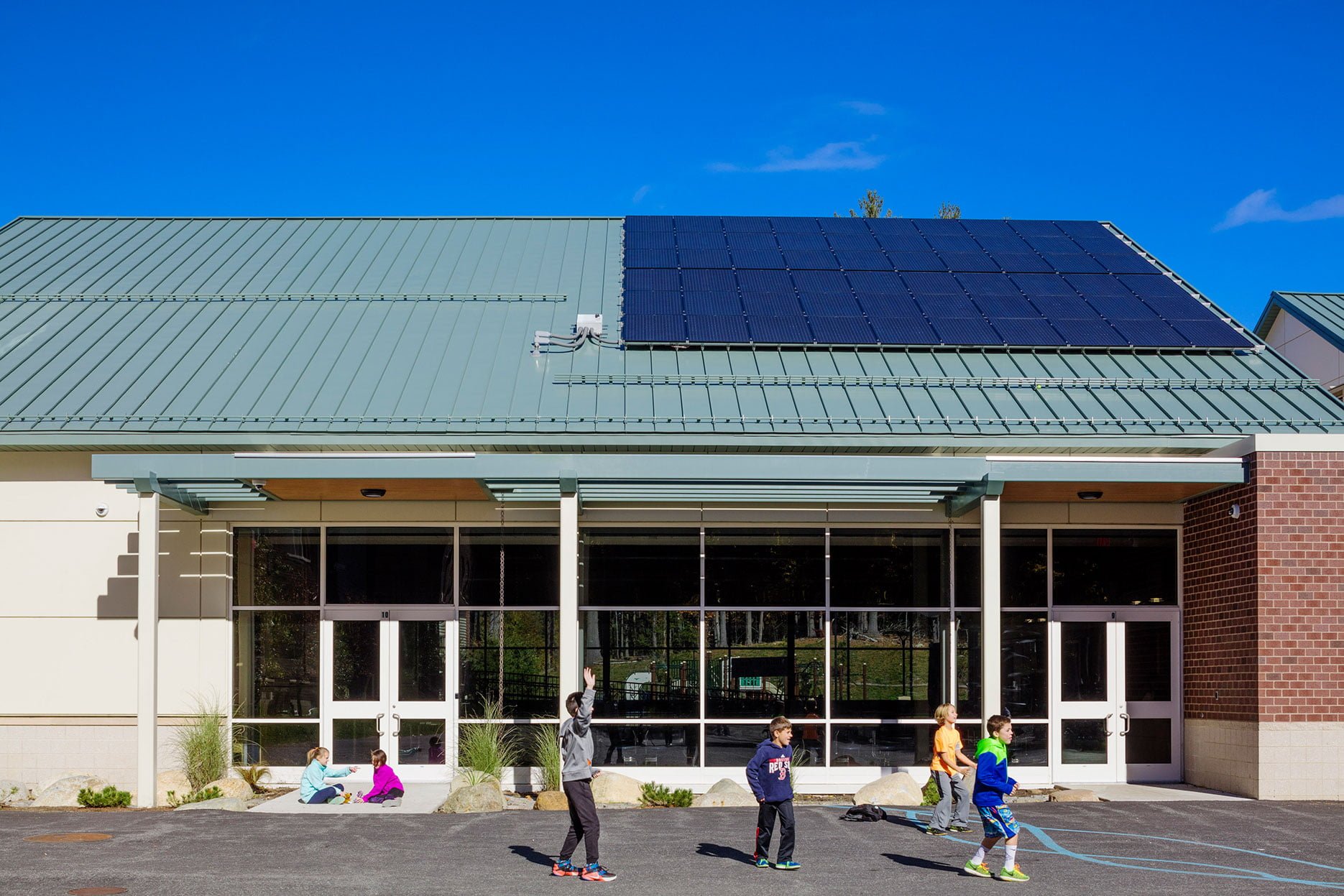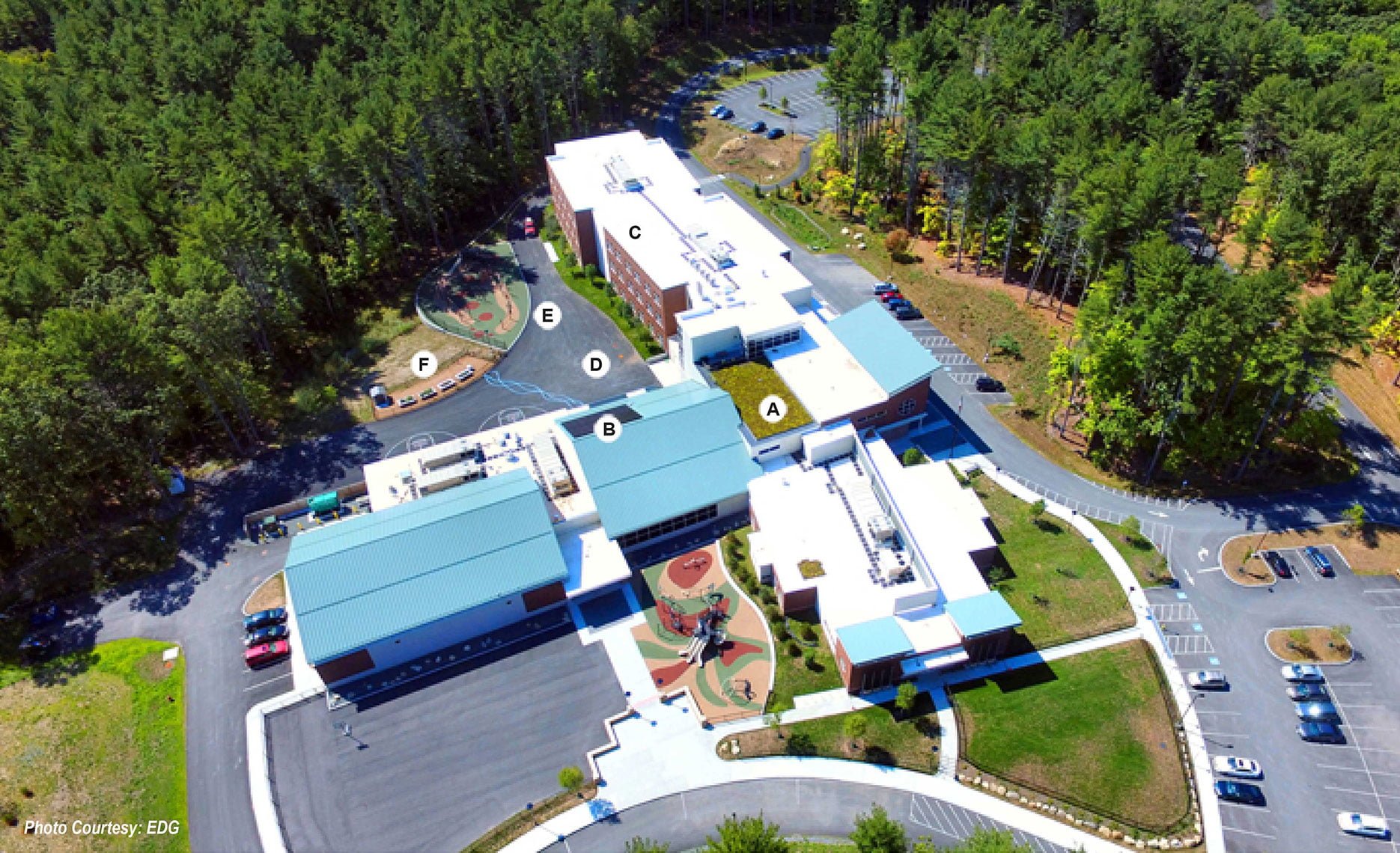Sustainability After Occupancy
As designers we are constantly looking for ways to incorporate sustainable concepts and practices into our projects. We work intensely with our clients and engage in sustainable building certification programs such as LEED1 and CHPS2 as part of our practice in the design of educational buildings. These certification processes help guide design and construction teams throughout the development of sustainable programs as we work closely with our clients. Our hope is that the elements incorporated in each building remain current, are utilized and are beneficial for end users.
Buildings, and all that goes into them, account for a large percentage of energy usage today. We have the responsibility to ensure that these buildings, especially schools where children learn and grow, consume less energy, and help to educate future generations as teaching tools. Energy reduction extends from the buildings, themselves, into the surrounding site.
Penn Brook Elementary School was completed in 2015 and continues to be an energy efficient model for the Town of Georgetown, MA. The school is nestled in a wooded area and has been dubbed ‘Penn Brook: School in the Woods’. There were several design concepts incorporated into the building and site, and it was awarded with a ‘LEED Silver’ certification with the U.S. Green Building Council. Penn Brook was the first LEED certified building in Georgetown, MA and the Penn Brook School Building Committee and school staff were very involved throughout the project to ensure the success of the sustainable goals for the project.
We recently had a chance to review some of the sustainable elements with the staff in Georgetown that were involved in the project as well as working in the building and on site. To name a few, the Penn Brook Elementary site incorporated porous pavement, a photovoltaic array, graywater reuse for student gardens and graywater reuse in toilet cores.
Michael Anderson is the Facilities Director for Georgetown Public Schools:
“One of my favorite things about the site is the porous pavement. As soon as the snow melts, the water drains away, and we have no ice on the playground pavement.”
In addition to minimizing the Owner’s ice and snow removal efforts, DRA and our consultants utilized the porous pavement to facilitate stormwater infiltration directly into the ground. It minimizes the amount of structures that our civil engineers are required to incorporate into the project by reducing the non-porous areas required on site. The play area was the optimal place to use porous pavement because it was on the southern exposure of the building without exposure to high volumes of salt and sand that we see on roads in New England winters and it’s great to hear that it’s continuing to work so well.3

Photovoltaic panels were also incorporated into the project and allow the building to realize savings on their monthly energy bill. The array provides a 1% return of the overall building projected energy usage and is located on the south side of the building to optimize sun exposure and payback to the Town. This array includes room for expansion should the town pursue additional panels to increase the size of the array for a higher payback.
We value communication from our past clients, after occupancy, and hope to continue the process as we look for sustainable solutions for future projects. We like to know what works and what is truly valuable to clients to ensure that we continue to improve our sustainable building goals.
To see additional sustainable features included in the Penn Brook School click here.

Aerial view of Penn Brook School. Sample sustainable elements: A. Green Roof – vegetated roof garden, B. Photovoltaic panels on cafeteria roof, C. Classroom wing roof collects rainwater to flush toilets, D. Buried rainwater collection tank, E. Porous pavement minimizes water runoff, F. Student Gardens with cistern and water pump uses water from cafeteria roof.
References:
1 United States Green Building Council & Leadership in Energy and Environmental Design (LEED) Certification Programs
2 Collaborative High-Performance Schools (CHPS) Certification Programs
3 https://www.greenblue.com/na/permeable-pavement-the-pros-and-cons-you-need-to-know/

